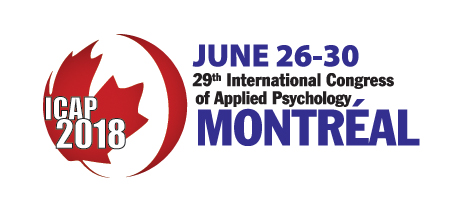2018 Pre-Congress Workshop 1: Treating Simple and Complex Anxiety-Related Disorders with Virtual Reality: Evidence for Best Practices
Jun 24, 2018 01:00PM to Jun 24, 2018 04:30PM
Palais des congrès de Montréal

| Presented by: | Stéphane Bouchard |
| Sponsored by: | Clinical Psychology |
| Continuing Education Credits: | 3.25 |
| Notes: |
Cet atelier est aussi disponible en français (le 25 juin, 8h30 à 12h00) |
| Cost: |
CPA/IAAP Members: $195.00 + GST + QST Non-Members: $275.00 + GST + QST
Click here to download the country list |
| Duration: | Half Day (13:00 – 16:30) |
| Target Audience: | Clinicians, Researchers, and Students |
| Skill/Difficulty Level: | Intermediate Level |
|
Workshop Description: Virtual reality (VR) possesses significant assets for the treatment of anxiety disorders (as they were defined in DSM-IV) and can lead to reliable changes in behaviors for people suffering from phobias, panic, social anxiety, GAD, OCD and PTSD. This powerful technology offers more control over exposure stimuli, is less intimidating for patients than in vivo exposure, provides easy access to feared stimuli in the therapist’s office, and allows therapists to expose patients to various situations in ways they might not dare to do in vivo. Several studies have confirmed the efficacy of VR in the treatment of specific phobias and randomized control trials (RCTs) are now replicating these findings for more complex anxiety disorders. Experimental studies and smaller trials have also confirmed the potential of VR for OCD and GAD. However, treating anxiety-related disorders with VR requires some specialized training, such as understanding the concepts of presence and immersion, being aware of cybersickness and how to reduce it, and knowing how to use the technology. Finally, the increase in popularity of head-mounted displays is leading to a plethora of new immersive applications, leaving clinicians with few cues to decide which can be effective, and how to use them. The goal of this workshop is to present evidence-based data on phobias and complex anxiety-related disorders and their treatment, and the nuances required to know when and how to use them. |
|
|
Learning Outcomes:
|
|
